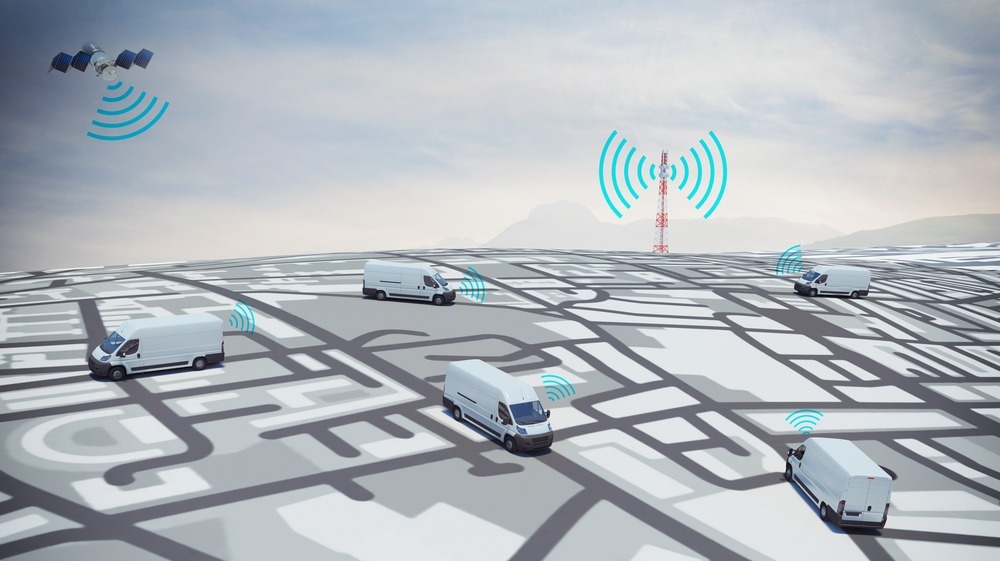Back to articles
Preventing Theft With Cellular IoT & Real-Time Tracking

Theft of industrial equipment is a global problem. Existing tracking systems haven’t reduced incidents, so far. The next-generation tracking solutions powered by cellular IoT are set to change that.
Theft of equipment and heavy machinery is a major problem around the world. The Chartered Institute of Building (CIOB) recently estimated that UK businesses lose £400M yearly to vandalism and theft. 21% of respondents stated that they experience theft each week and an incredible 92% said they are affected at least annually.
A low risk, high reward problem
In the USA the estimated annual cost of equipment theft is between $300 million and $1 billion. This number doesn’t even consider the financial consequences of business interruption. Only 21% of stolen equipment was recovered in 2016.
Equipment theft seems to be a low risk, high reward business. Equipment and machinery are found mostly on low-security work sites. The cost of adding security such as cameras, fences or patrolling services can be high, as machinery often changes physical location or operates across large areas. The data above shows that other means of protection such as locks and steering locks are inefficient or simply not used.
The problem with existing tracking systems
In recent years, tracking systems have emerged but they are yet to see widespread adoption. Data from NER shows no reduction in theft over the last years. Why is that?
Standard 2G, 3G or 4G connectivity use lots of power, add complexity to communication and have limited coverage. These standards were built with handheld devices and bandwidth in mind. Development of other applications such as asset tracking and connected sensors has been complex and costly, resulting in few deployable solutions.
To address this, low power cellular IoT solutions are now becoming available in the year of cellular IoT. The beauty of cellular IoT technology is that it runs on the existing 4G communication infrastructure. This means it is already present worldwide, covering more than 90 percent of the world’s population.
The difference from standard 4G is that cellular IoT is designed to work on small, constrained IoT nodes, such as sensors. Cellular IoT uses much less power and has an increased range for better coverage. The whole communication stack is lightweight to reduce bandwidth and memory.
Once entire applications with connectivity fit inside small, constrained nodes, they can operate for years from a single battery. This is already proven with short range connectivity such as Bluetooth Low Energy. Now, cellular IoT makes the same possible outside, over long range, and in remote places across the world.
Asset tracking with the Nordic Thingy:91
The new Nordic Thingy:91 is a complete prototyping platform for creating tracking applications with cellular IoT connectivity. It works out-of-the-box with an asset tracker application example. This gives you GPS for location tracking, and low power sensors that can detect movement, impact, orientation and environmental conditions.
The sensors can wake the device from sleep on specific conditions and so help to extend battery life further. The battery has a capacity of 1,440 mAh. Of course, it’s rechargeable or replaceable. Thingy:91 comes complete with a roaming SIM card that works in most parts of the world.
Due to its low power consumption, it can last for years on a small, standalone battery. The small size makes placement very discreet and flexible with no need for wiring. Both factors are key to simplify installation cost and complexity.
Cloud connectivity brings it all together
An IoT sensor is of no use unless its data is easily accessible. Cellular IoT brings the connectivity and cloud services make the data available in an easy, secure way. This last piece is crucial since the complexity of bringing together a complete IoT solution can otherwise be overwhelming.
The Nordic nRF Connect for Cloud brings it all together for the Thingy:91. Here you connect the Thingy:91 to the cloud to do configurations and updates, all without a single line of code.
Once connected, the Thingy:91 starts to stream location and sensor data that can be tracked in real-time or recorded for later use and analysis. Team members can share and see the same project.
This shortens the path from idea to prototype and leaves the development team to focus on the actual application. Making development and deployment easy paves the way for solutions that can put thieves out of business in no time.
Certified and ready to go
The Thingy:91 is built around the Nordic nRF9160 SIP. This has completed the cellular certification process for CE, FCC, PTCRB and GCF, so it is ready to be integrated straight into commercial products. Qualifications for the LTE bands supported by nRF9160 and carrier certifications are well underway.
The path from idea to prototype is now extremely short. Very quickly you’ll see how any piece of equipment or vehicle with a cellular IoT tracking solution installed can trigger an immediate alarm when unexpected events happen. Location can be tracked in real-time and cloud connectivity makes the data available for whoever needs it, wherever they are.


